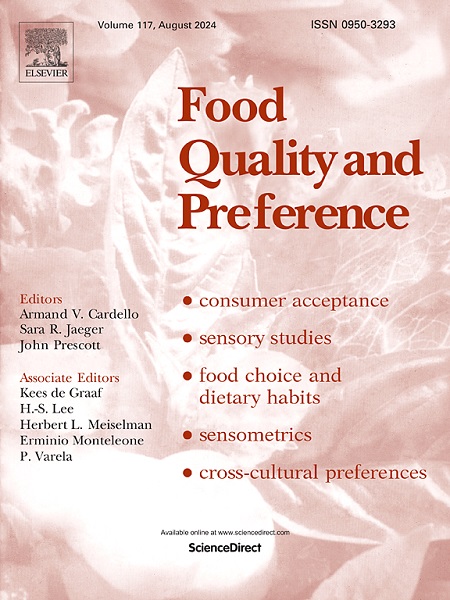The influence of emotional cues and anthropomorphism on product temperature expectations
IF 4.9
1区 农林科学
Q1 FOOD SCIENCE & TECHNOLOGY
引用次数: 0
Abstract
Throughout six online experiments (four pre-registered), in which participants were tasked to evaluate their temperature expectations of different beverages with or without emotional cues (i.e., emoji facial expressions) with specific temperature associations, we found that imbuing a product with emotional content can influence its expected temperature in online settings. A negative valence, low arousal (i.e., sad) expression on the receptacle of a hot beverage (e.g., hot chocolate milk, coffee) led to a lower expected temperature compared to a beverage with a positive valence, high arousal (i.e., happy) expression and a control condition without any expression. Notably, a happy expression did not result in any significant difference in expected temperature. In addition, there were no significant differences with cold beverages (i.e., iced chocolate milk, beer). We found that the influence of the sad emoji expression was enhanced with higher levels of anthropomorphism (i.e., making individuals focus on the emotions of the product). Our results suggest that the mechanism behind these effects is based on the product being imbued with the emotional connotation of the sad expression and, subsequently, its corresponding temperature association. Our research adds to the literature on consumer behaviour, food and anthropomorphism, and the relationship between temperature and emotions, and it has applications related to food expectations.
求助全文
约1分钟内获得全文
求助全文
来源期刊

Food Quality and Preference
工程技术-食品科技
CiteScore
10.40
自引率
15.10%
发文量
263
审稿时长
38 days
期刊介绍:
Food Quality and Preference is a journal devoted to sensory, consumer and behavioural research in food and non-food products. It publishes original research, critical reviews, and short communications in sensory and consumer science, and sensometrics. In addition, the journal publishes special invited issues on important timely topics and from relevant conferences. These are aimed at bridging the gap between research and application, bringing together authors and readers in consumer and market research, sensory science, sensometrics and sensory evaluation, nutrition and food choice, as well as food research, product development and sensory quality assurance. Submissions to Food Quality and Preference are limited to papers that include some form of human measurement; papers that are limited to physical/chemical measures or the routine application of sensory, consumer or econometric analysis will not be considered unless they specifically make a novel scientific contribution in line with the journal''s coverage as outlined below.
 求助内容:
求助内容: 应助结果提醒方式:
应助结果提醒方式:


